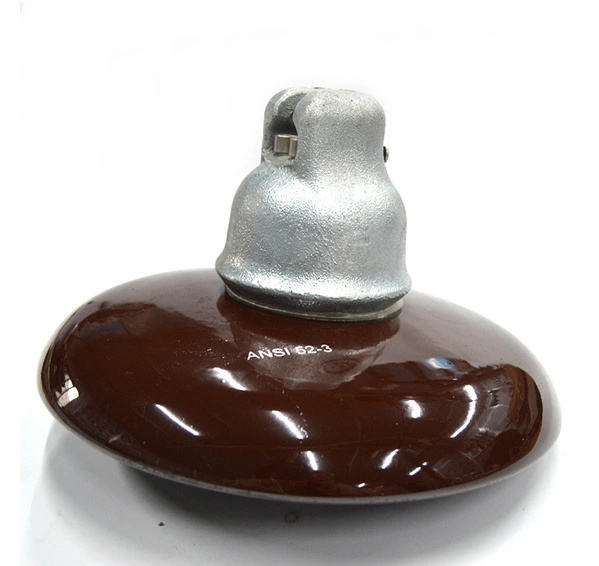Disc Insulator

Popis produktu
Disc Insulator
A ceramic composite insulator with excellent heat resistance and high mechanical strength is called a disc insulator. This disk insulator works well as a fixed conductor and insulating support for disc insulators transmission lines carrying high voltage and high current.
This type of disc insulator can function steadily in challenging conditions like high temperatures, high pressure, and high humidity. The suspension disc pin insulator is typically composed of ceramic materials and has exceptional insulating qualities as well as high temperature resistance. The disc insulator comes in round or rectangular shapes, and to keep pollution from impairing insulation performance, the surface is covered with anti-pollution flashover coating.
Another name for disc and pin insulators is suspension insulators. They fall into a variety of distinct categories, such as ANSI 52-3, 52-4, and so forth.
Features of Disc Insulator
Disc Insulators are critical components in electrical systems, providing essential electrical insulation and mechanical support in overhead power lines. Here are key features associated with Disc Insulators:
Material Composition
These electric power fittings are typically crafted from materials like porcelain or composite materials. Porcelain offers high dielectric strength, while composite materials provide advantages such as lightweight design and resistance to vandalism.
Sheds for Pollution Resistance
The sheds or grooves on the surface of power line insulators help prevent the accumulation of pollutants, such as dust or moisture, reducing the risk of electrical arcing or leakage.
Ease of Installation
Designed for straightforward installation on supporting structures, facilitating efficient deployment in overhead power line systems.
Compliance with Standards
Manufactured in compliance with international and regional standards, ensuring that these types of hardware fittings for transmission lines meet safety and performance requirements.
Disc insulator types, with their combination of electrical insulation and mechanical support features, play a crucial role in maintaining the reliability, safety, and efficiency of overhead power transmission systems.

